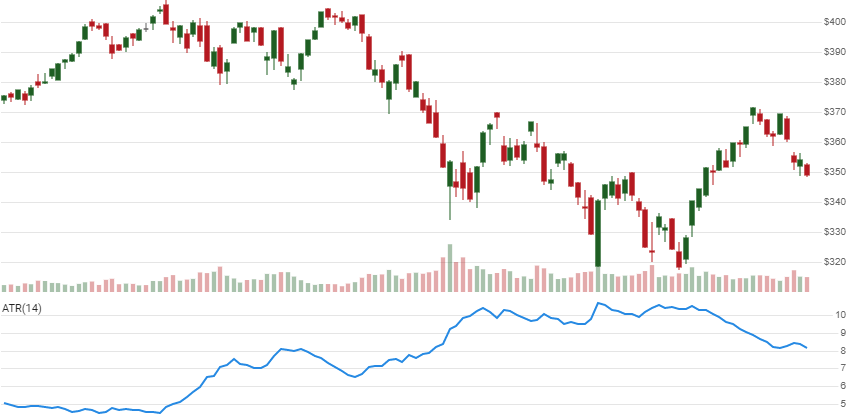Average True Range (ATR)
Created by J. Welles Wilder, True Range and Average True Range is a measure of volatility that captures gaps and limits between periods. [Discuss] 💬

// C# usage syntax
IEnumerable<AtrResult> results =
quotes.GetAtr(lookbackPeriods);
// ATR with custom moving average
IEnumerable<SmmaResult> results =
quotes.GetTr().GetSmma(lookbackPeriods);
// raw True Range (TR) only
IEnumerable<TrResult> results =
quote.GetTr();
Parameters
lookbackPeriods int - Number of periods (N) to consider. Must be greater than 1.
Historical quotes requirements
You must have at least N+100 periods of quotes to cover the convergence periods. Since this uses a smoothing technique, we recommend you use at least N+250 data points prior to the intended usage date for better precision.
quotes is a collection of generic TQuote historical price quotes. It should have a consistent frequency (day, hour, minute, etc). See the Guide for more information.
Response
IEnumerable<AtrResult>
- This method returns a time series of all available indicator values for the
quotesprovided. - It always returns the same number of elements as there are in the historical quotes.
- It does not return a single incremental indicator value.
- The first
Nperiods will havenullvalues for ATR since there’s not enough data to calculate.
⚞ Convergence warning: The first
N+100periods will have decreasing magnitude, convergence-related precision errors that can be as high as ~5% deviation in indicator values for earlier periods.
AtrResult
Date DateTime - Date from evaluated TQuote
Tr double - True Range for current period
Atr double - Average True Range
Atrp double - Average True Range Percent is (ATR/Price)*100. This normalizes so it can be compared to other stocks.
Utilities
See Utilities and helpers for more information.
Chaining
Results can be further processed on Atrp with additional chain-enabled indicators.
// example
var results = quotes
.GetAtr(..)
.GetSlope(..);
This indicator must be generated from quotes and cannot be generated from results of another chain-enabled indicator or method.